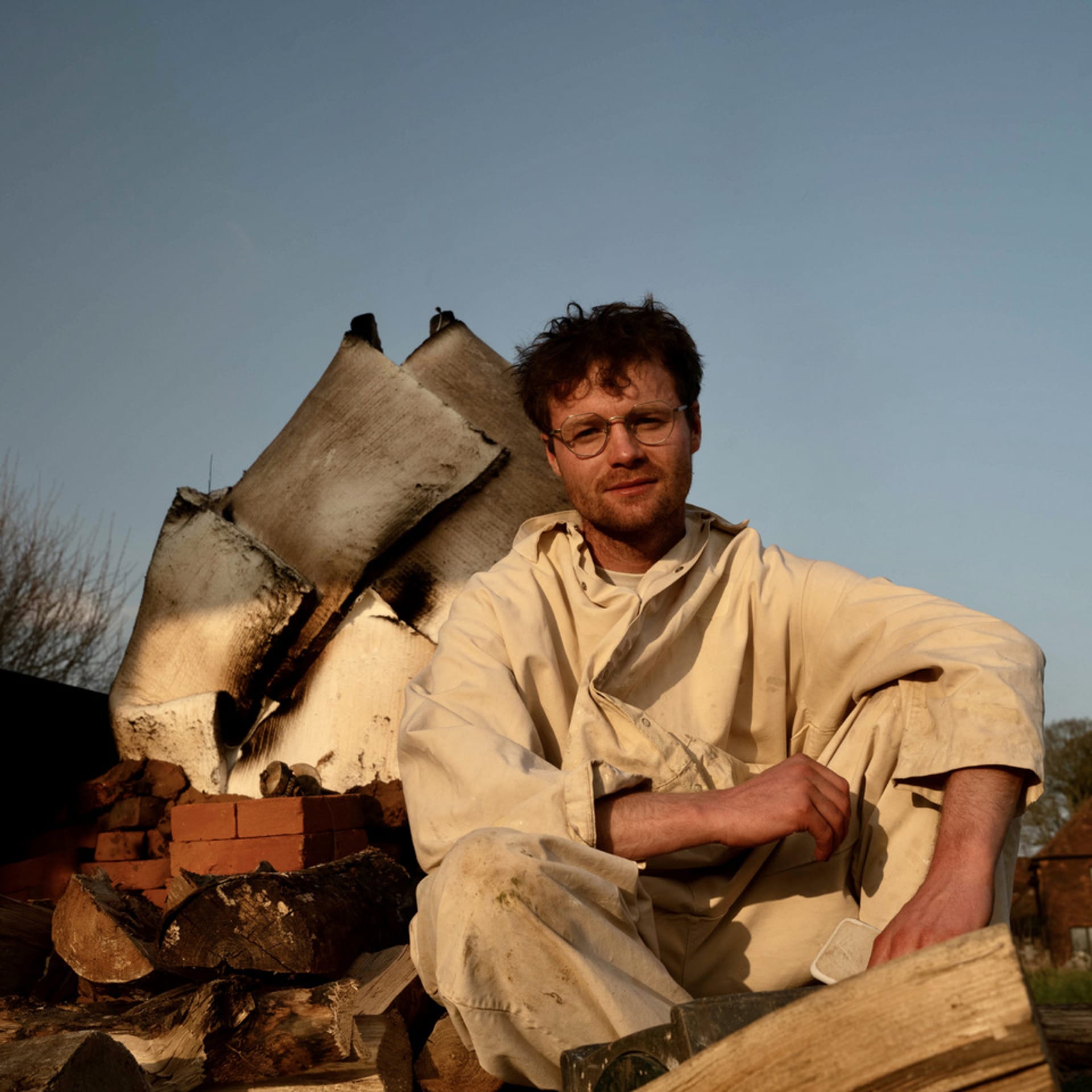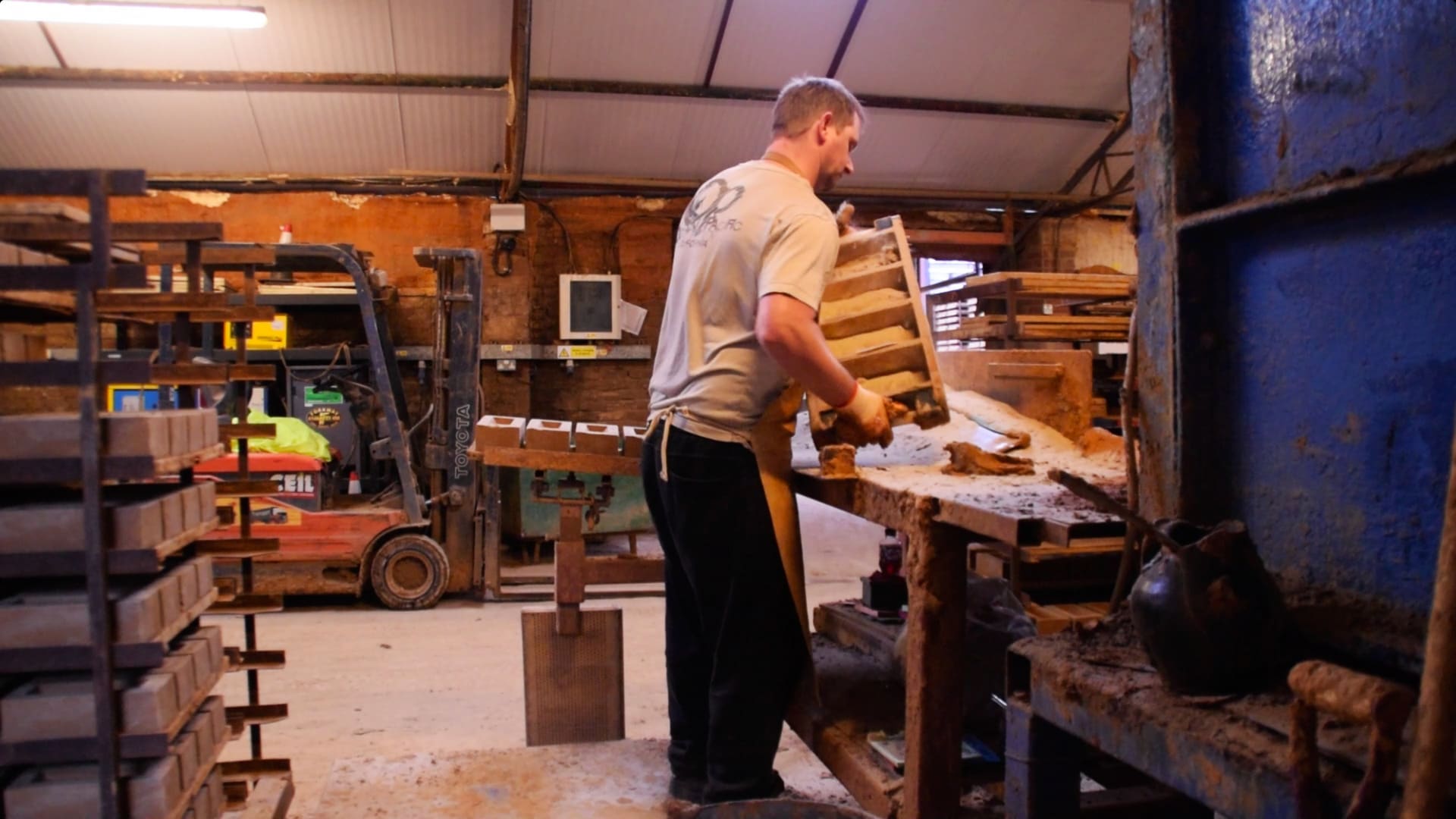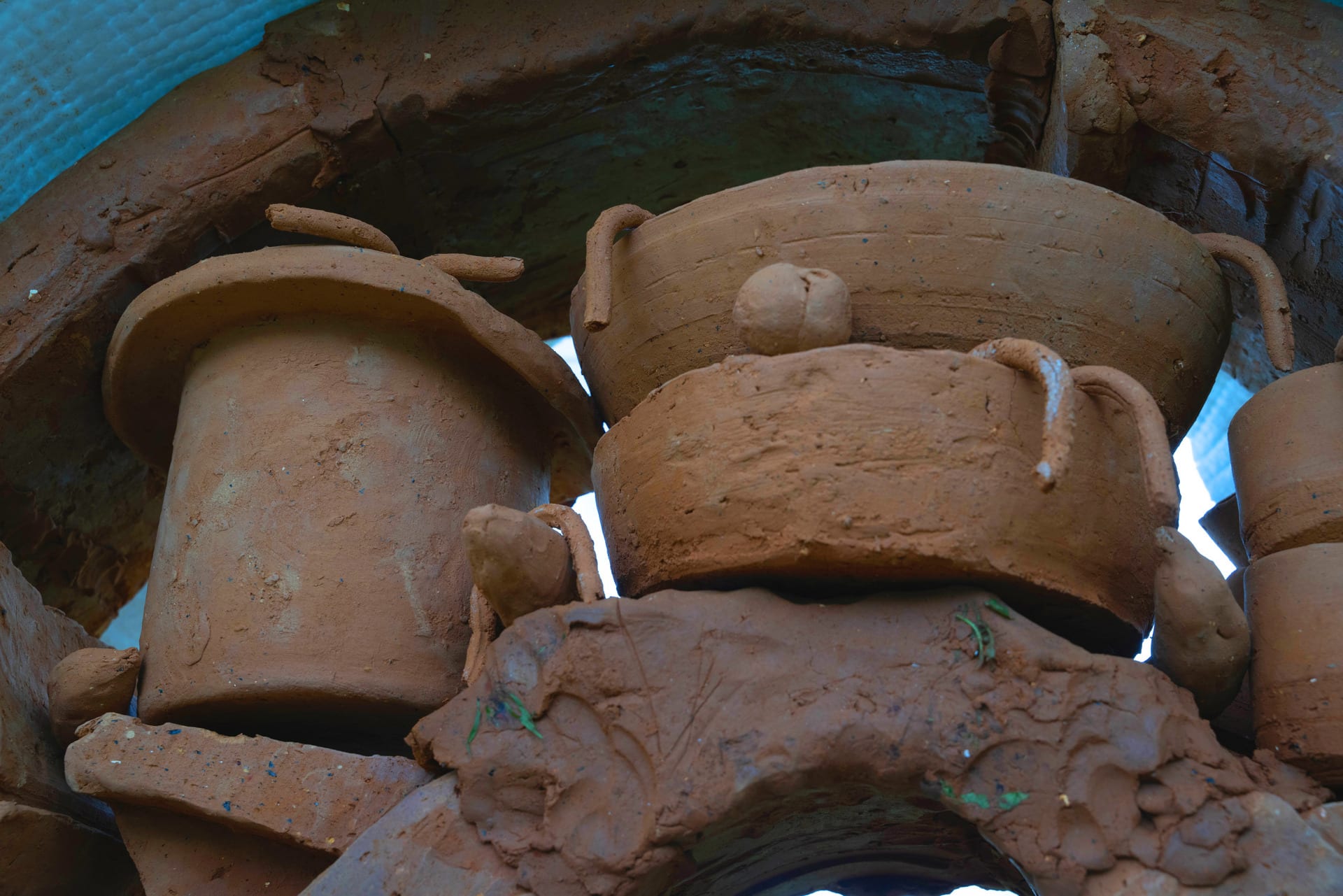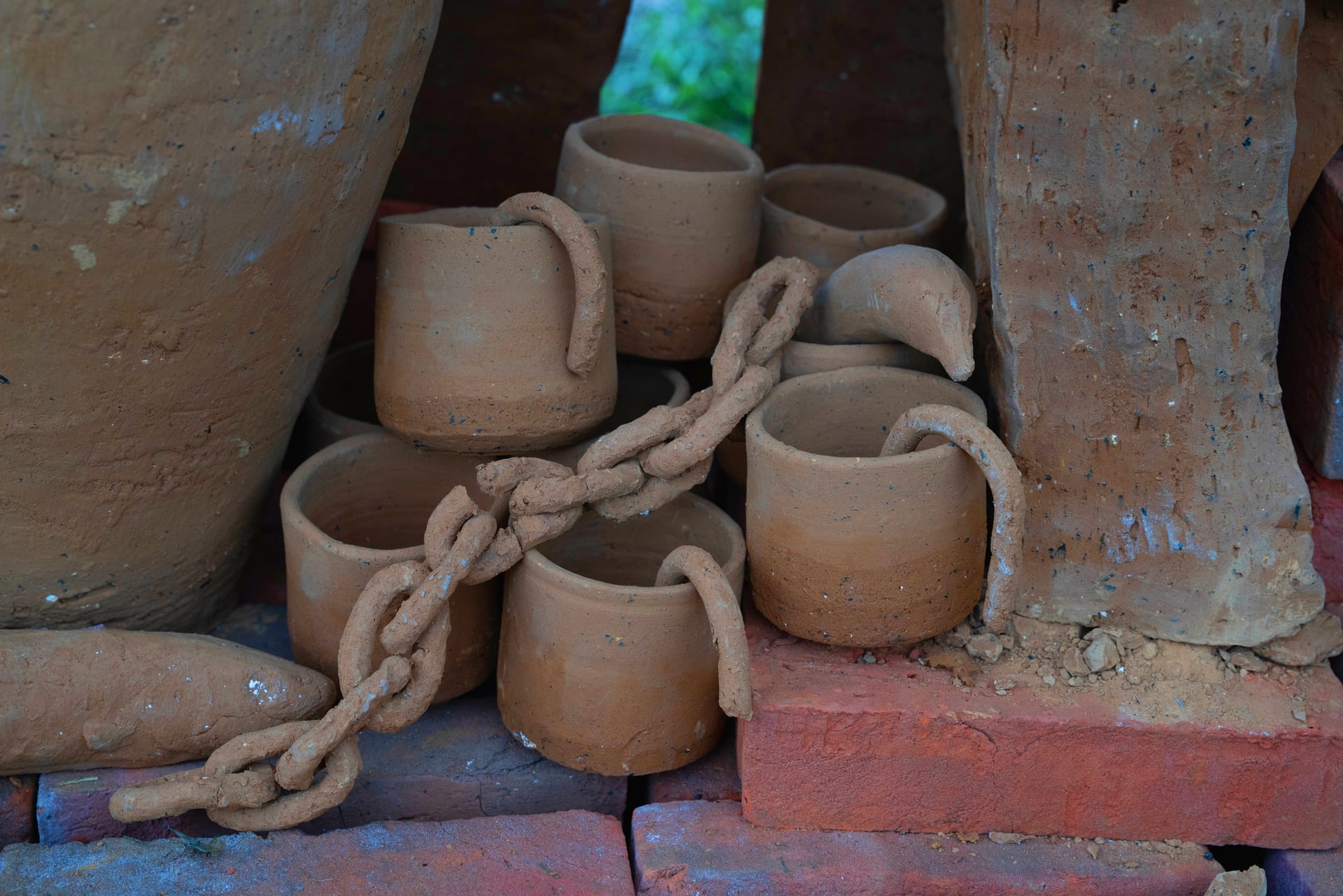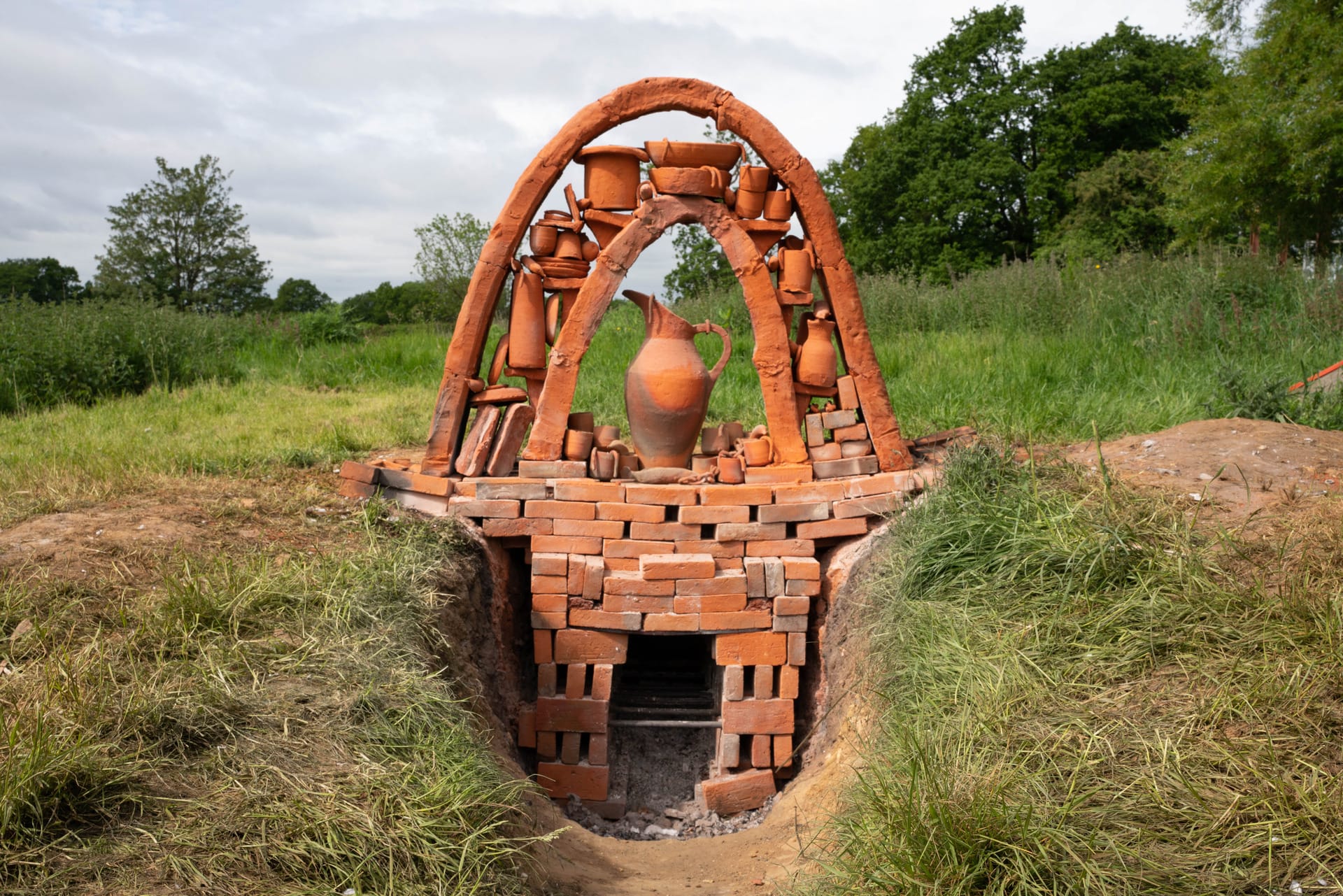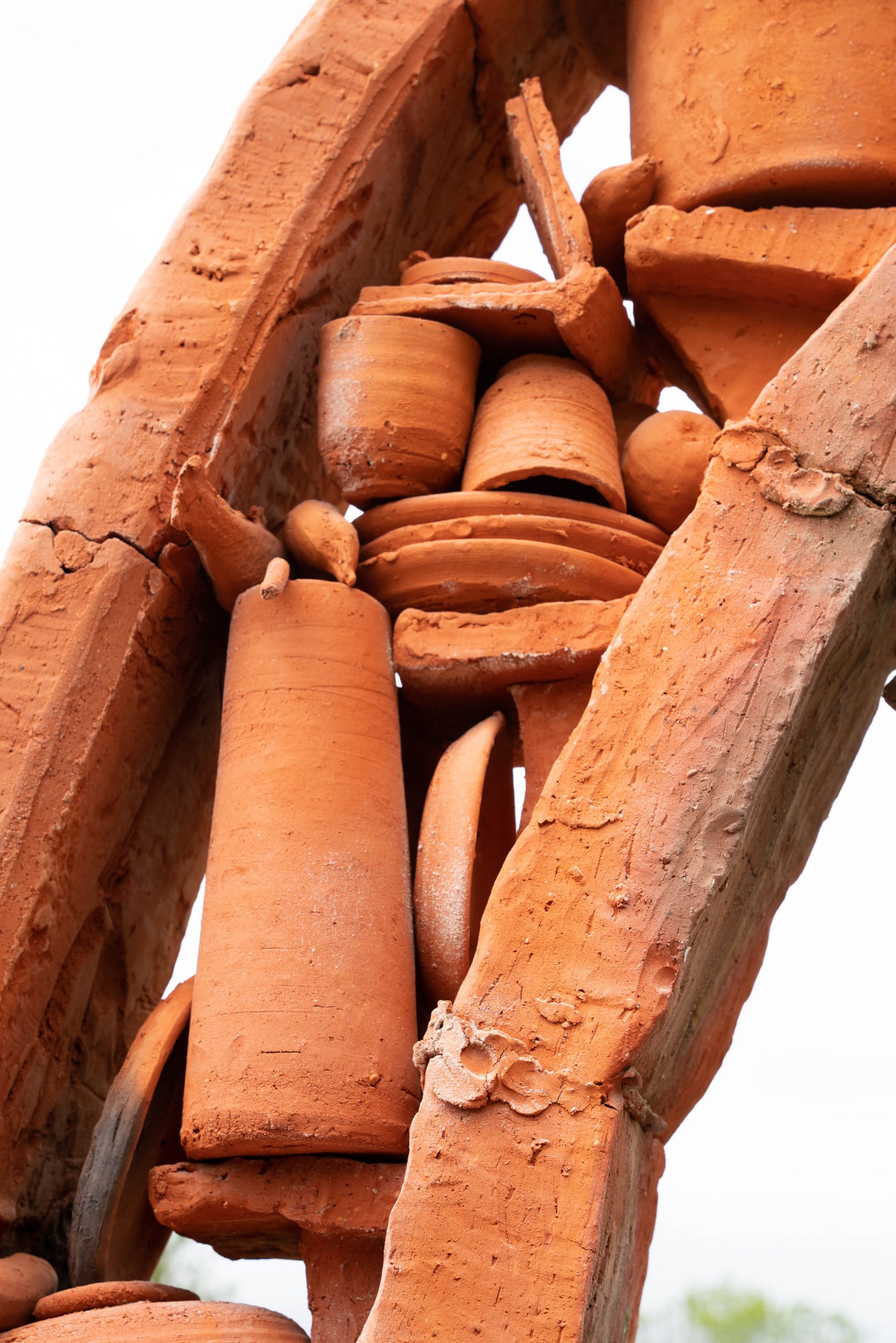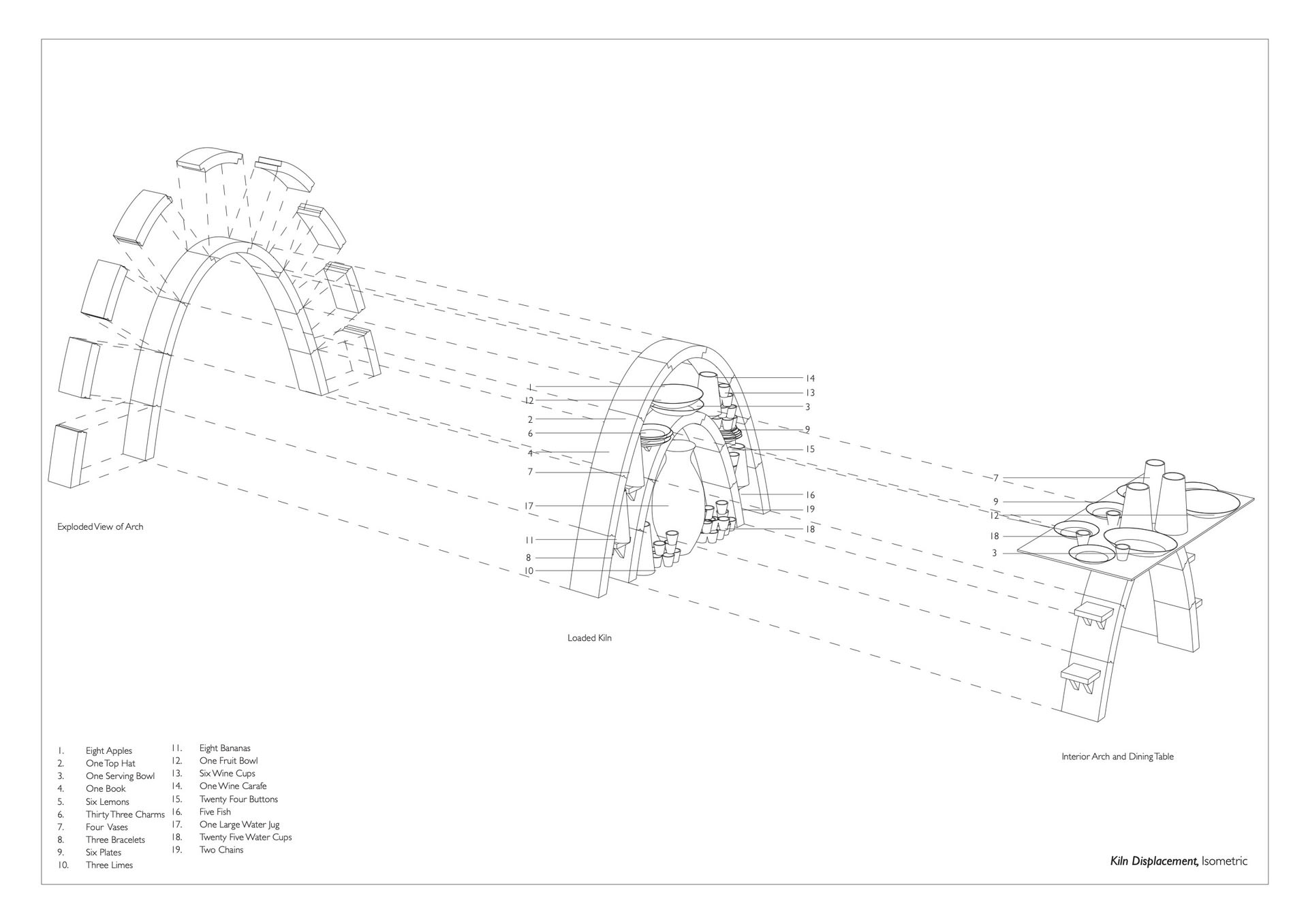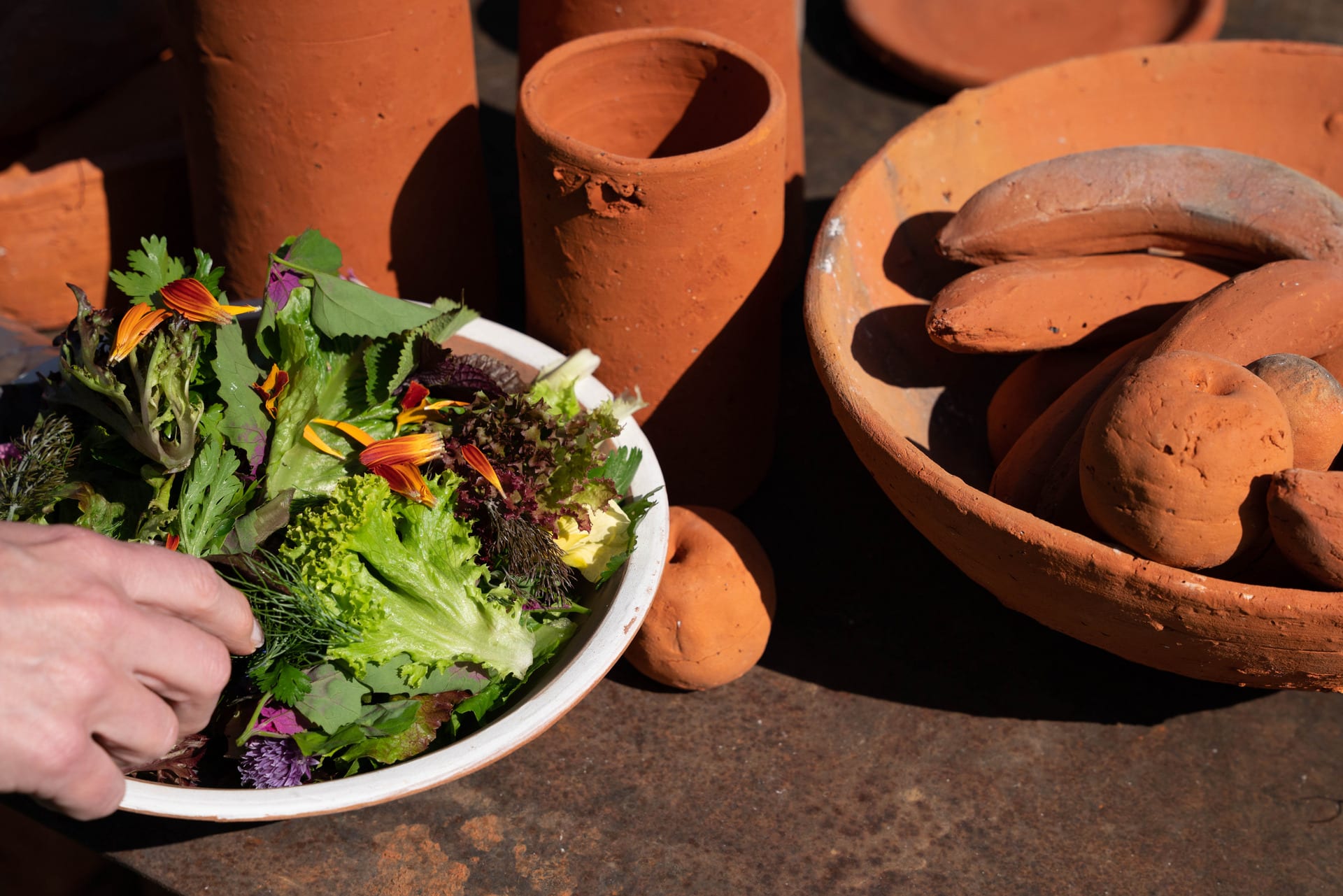I began to investigate the processes of making, at the centre of this industry, as well as the traditional intersection between ceramics and architecture, the brick wall.
At H.G Matthews 3640 cubic metres of clay is dug on site each year, processed through crushers and grinders, the raw materials, unlike pottery, are unrefined, but fit for purpose.
Squeezed through pug mills, the clay is then piped onto each work bench. Andre through touch alone, cuts, folds and forms the clay into a block with an outer skin of sand creating a crust, acting as a non stick, before throwing it into a mould. Andre makes a brick every 24 seconds and has worked at a brick makers for 35 years, meaning at this moment he holds the skill of someone who has made 24 million bricks, equating to 4 royal Albert halls.
The clamp kiln is a Saxon designed kiln that functions through the stacking of bricks. Each brick is placed on its side leaving a finger widths gap. This gap on the mass of 70,000 bricks acts as the chimney and allows the kiln to function. Therefore, the bricks become both the product and the means of the kilns function.
One week and fourteen tonnes of wood, the kiln is slowly brought up to the desired temperature of 1200 degrees celsius. During this time, each brick is turned from clay to ceramic and is now responsible for the production of 3.6 kgs of CO2 and has a future that could last thousands of years. Additionally, this kiln also became the centre of the brick yard, a place to eat lunch or chat about the football game last night.
This is where I met Tony, a wood firing kiln specialist whose knowledge became a constant link to industry and my practice.
Because the work was so attached to touch and feel, I had to become a brick maker to understand the core of the questions I was asking.
I quickly realised that the sloppy gloop of clay was hard to manage and both required a soft touch and a forceful hand. During this week I made 1000 bricks and set about firing them. I realised at this point that with joint hardship created through labour meant the bonding of relationships. And during this time the production of making and firing requires a community. The process of making, stacking, firing and sorting meant I touched the brick 16 times. Additionally, at H.G Matthews clay moves 1.2km from the ground to the finished brick over a course of 3 weeks. These were the inefficiencies, but the human time spent was also the reason for their value, each person along this process had a different way of making which meant each brick had its individual faults, and each mark left by the fire was both a product of the stacker and the firing team.
How can we understand this process to create a new way of constructing architecture?
What is the importance of the kiln and my practice?

